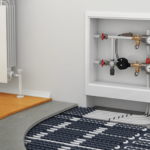As we get older, our homes often need some changes and updates to match our evolving physical capabilities and way of life. Completely renovating your house is not necessary, however, there are ways to make it more comfortable, accessible, and safe for seniors. With a few straightforward modifications and adaptations, you can adjust your living space to better support daily activities for an elderly loved one. Read on for tips to make your home more liveable for years.
- How do you Enhance Safety and Accessibility in the Home?
- Embrace Adjustable Furniture for an Optimal Living Environment
- Pay attention to the Floor for Reducing Tripping Hazards
- Improve Lighting for Reducing the Risk of Falls
- Prioritise Supportive Seating for Comfort and Well-being
- Install Handrails and Grab Bars for Added Security
- Take Away
How do you Enhance Safety and Accessibility in the Home?
Embrace Adjustable Furniture for an Optimal Living Environment
Adjustable furniture conforming to needs is key for a senior-friendly home. Invest in adjustable power recliner suites that are positioned upright for reading or reclined to relieve back pain. Height-adjustable tables, barstools and armchairs facilitate various activities such as cooking, dining, pursuing hobbies, and working on a computer while providing proper support to the back and joints at any desired height.
Pay attention to the Floor for Reducing Tripping Hazards
Making a few changes to your flooring can drastically reduce fall risks, allowing seniors to move the home worry-free. Replace any slippery surfaces with non-skid materials such as textured tiles, vinyl plank flooring, or low-pile carpeting. These provide better control for unstable feet. Ensure all floo r rugs and mats have non-slip backing and are firmly secured in place so they do not shift on the ground. Also, keep your space clutter-free from items scattered on the floor, such as shoes or small toys, as they might cause tripping.
Improve Lighting for Reducing the Risk of Falls
As we age, diminished vision makes tripping and falling more likely. Ensure all rooms and staircases have adequate overhead lighting. Use motion-activated or automatic lights in hallways and bathrooms to make it safer for seniors to get around at night. Install lighting over counters, near entrances, and in any other places where glare from shiny surfaces could impact the balance and stability of seniors when walking.
Prioritise Supportive Seating for Comfort and Well-being
Supportive, ergonomic seating throughout the home promotes better posture and alignment during everyday activities. Look for chairs with firm, stable bases that won’t tip over easily. Padded seats with lumbar support enhance overall comfort, while armrests provide stability during the process of sitting down and getting up. Moreover, seats with higher heights can minimise the strain on your body when standing up. Avoid overly soft or low-to-the-ground furniture, as these can pose challenges to navigating independently.
Install Handrails and Grab Bars for Added Security
Handrails provide stairway stability, while grab bars in the bathroom improve balance for older adults. Mount grab bars near toilets, in showers and alongside tub areas. With a helpful hand to hold onto along the way, seniors carry out daily activities with ease. Also, use anti-slip mats at the washroom entrance, in front of the toilet and even next to the washbasin to reduce the chance of a tumble in the bathroom
Take Away
Simple home modifications can make all the difference in helping elders. Rather than a major renovation, strategic tweaks like replacing furnishings with senior-friendly options, improving lighting, and installing grab bars and rails can transform your existing home into an accessible sanctuary. Being proactive and making these thoughtful adjustments early on, before mobility becomes an issue, provides reassurance that the home can gracefully accommodate changing needs.














